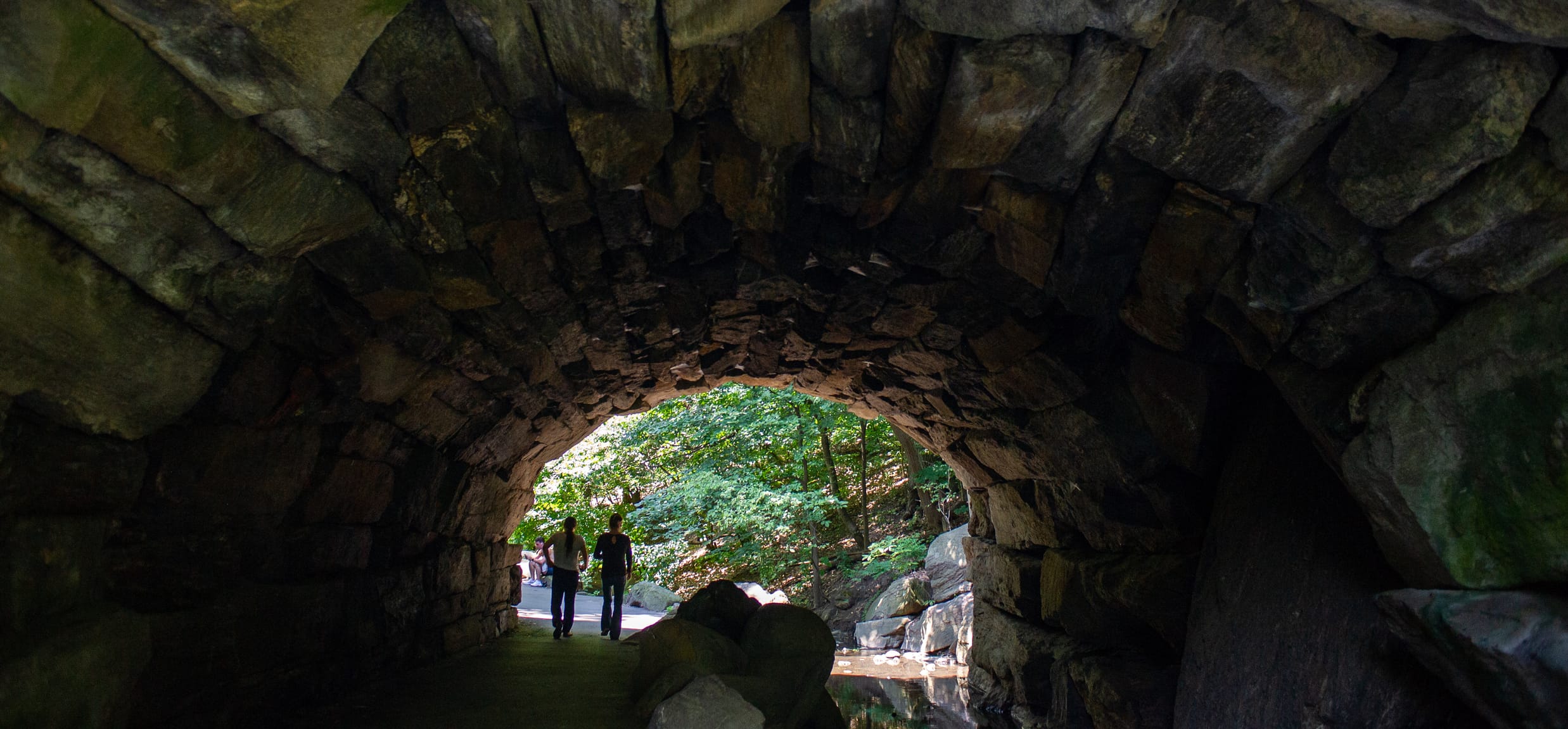Huddlestone Arch

Huddlestone Arch is one of Central Park’s most awe-inspiring features and a popular attraction in the North Woods.
Located at the eastern entrance to the woodland landscape known as the Ravine, it’s constructed entirely of massive boulders—found in the surrounding landscape—with one reportedly weighing over 100 tons.
The arch is well-known as a feat of engineering: its builders did not use any mortar or supporting elements to bind the stones and create the arch. It’s held together through the pressure and gravity of the stones “huddling” together, forming a structure strong enough to support the traffic on the East Drive above it.
The Park’s designers, Frederick Law Olmsted and Calvert Vaux, hoped the rustic construction of the arch would create the impression that the structure was a product not of human ingenuity, but of nature—inspiring wonder and even a bit of fear in the visitor. This was a fitting entrance to the Ravine, one of the Park’s most picturesque landscapes, also designed to appear natural and wild—but like the arch is designed and constructed. On the west side of the Ravine is another impressive rustic arch and cascade combination: Glen Span.
Stroll in the Ravine
With meandering paths, a dense canopy of trees, and cascading waterfalls, the Ravine evokes the wilderness of the Adirondacks.
Central Park’s arches and bridges are an integral part of its circulation system. The Park’s designers, Frederick Law Olmsted and Calvert Vaux, created an intricate system of pedestrian paths, a bridle path, and carriage drives to allow visitors to experience the Park’s landscapes in a variety of ways. However, for this system to work safely and in a relatively small space, it had to limit interactions between potentially conflicting forms of traffic. The Park’s arches and bridges separate this traffic by carrying one form of transportation over another.
Between 1859 and 1866, 27 arches and bridges were built in Central Park. All were designed by Vaux—in some cases with the assistance of fellow architect Jacob Wrey Mould. Each one is unique, designed with various materials and decorative motifs and with careful consideration of its placement in the landscape. Over time, six arches and bridges were added and three were removed, bringing the total to 30 ornamental bridges and arches in the Park today. There are also additional bridges in the Park’s woodlands that are smaller, constructed with wood, and typically cross over streams.
Another key part of this circulation system are the transverse roads that allow City traffic to cross the Park. The transverse roads are sunken below the grade of the Park with bridges crossing over them. These bridges were designed as more utilitarian structures and weren’t intended to be seen—but they allow pedestrians and other traffic to seamlessly move through the Park. There are 13 transverse road bridges (one of which, Denesmouth, is also considered an ornamental bridge).

Give Back to the Park
Arches and bridges support every visitor’s journey through Central Park. You can help the Conservancy maintain these integral structures and the landscapes that surround them.








